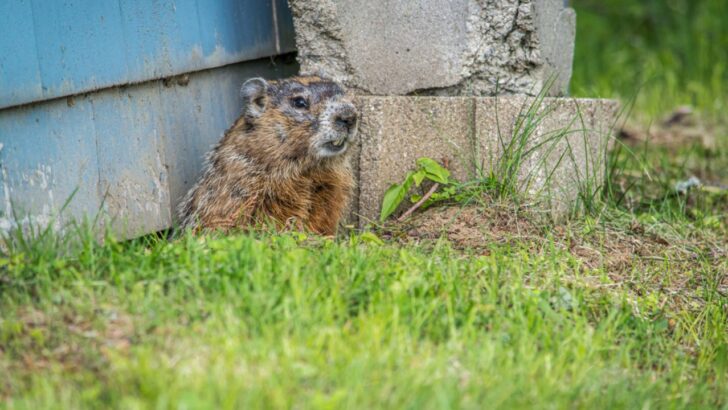I felt a sort of thrill this spring when we began seeing baby groundhogs in the yard. Each morning found me eagerly peering out the bedroom window to watch the adorable, bumbling balls of fur learning to graze on the abundant clover in the lawn, safely outside the garden fence and within scurrying distance of their home in the brush pile.
But this groundhog family became decidedly less cute when its members began digging under the garden fence to graze among my vegetables. As much as I love seeing them in the yard, now I’m wondering how to get rid of groundhogs in the garden.
Each morning when I go out to pick beans and tomatoes, I sweep my gaze along the border and, with a sigh, fill in the newest hole and place a couple of bricks or rocks on top lest the hole reappear by morning.
How to Get Rid of Groundhogs in the Garden

Image Credit: Shutterstock.
The bean beetles don’t need help decimating my bush beans, and the sweet potatoes – well, let’s just hope there’s more going on underground than what I can see on the surface. I’ve scoured a few cooperative extension websites for information on how to save my plants from groundhogs and compiled my findings here to share with you.
Before we get into control methods, let’s take a look at how to identify groundhogs and their damage. It’s important to make sure you target the right pest: I’ve been blaming deer for damage that appears to be shared by some enterprising rabbits and groundhogs as well.
How to Identify Groundhogs
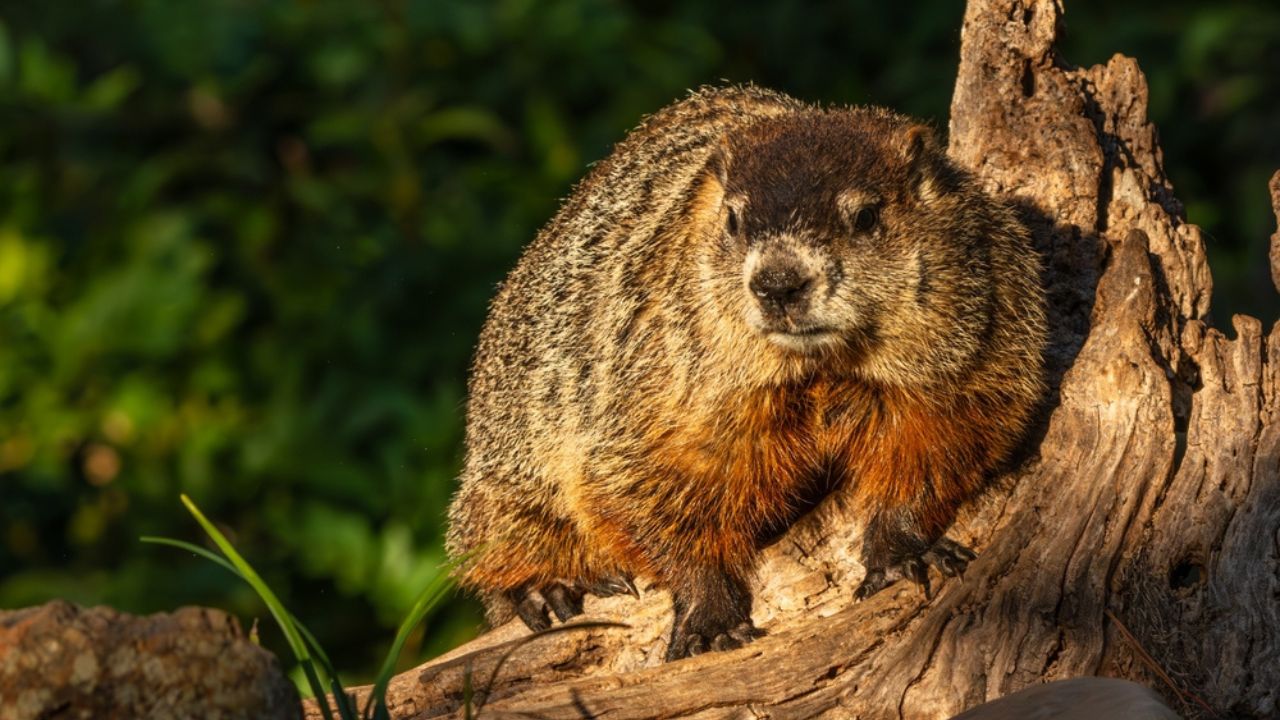
Image Credit: Shutterstock.
Also called woodchucks or whistle pigs, groundhogs look something like a cross between a squirrel and a beaver. In fact, they belong to the squirrel family. They have stout, compact bodies with short legs and a relatively short tail, all covered in grizzled brown fur. They average about 16 to 27 inches long and five to 10 pounds in weight.
Diurnal animals, groundhogs, can often be seen grazing or basking in the sun during the day. They typically move rather slowly due to their short legs, though they can scurry pretty quickly when they feel threatened, and they are surprisingly good climbers.
What Groundhog Damage Looks Like
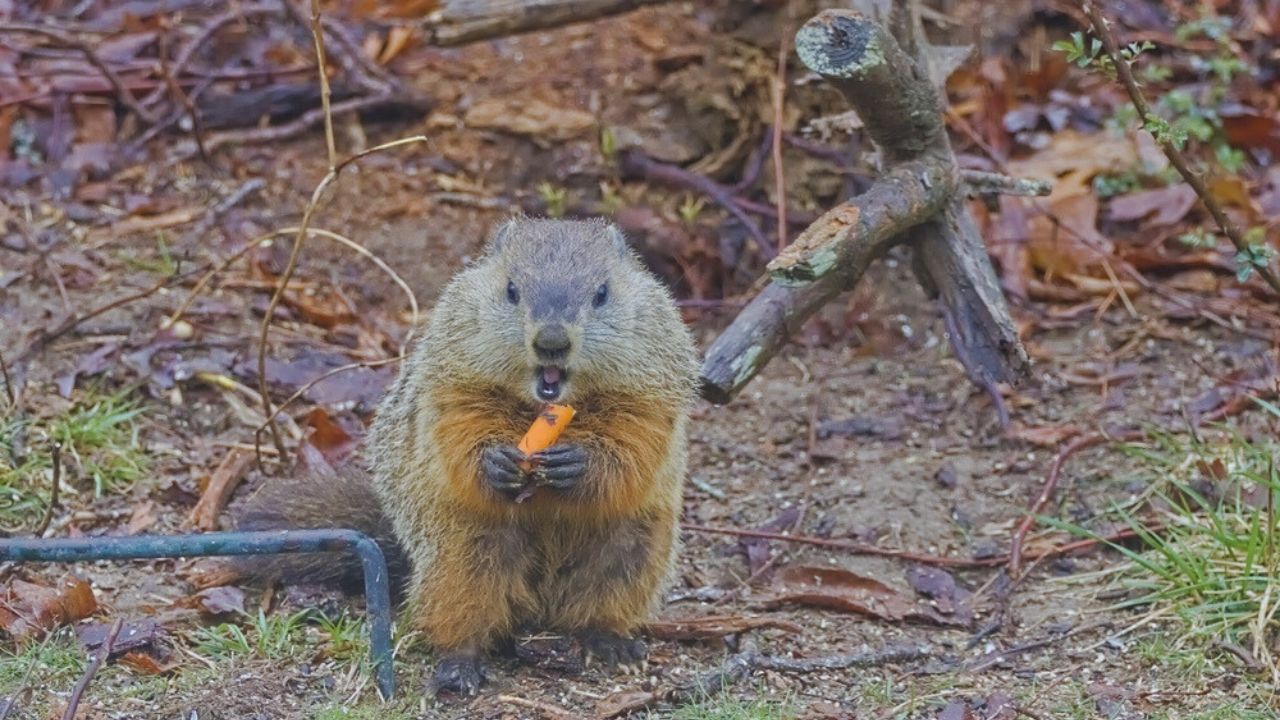
Image Credit: Shutterstock.
Groundhogs are herbivores and feed on a wide range of plant material, especially legumes, grasses, carrot tops, tomatoes, alfalfa, and clover. They have also been known to gnaw on and scratch fruit trees and ornamental shrubs.
If left unchecked, groundhogs can decimate an entire tomato patch or cause significant damage to other favorite crops, including flowers.
Groundhogs rarely feed more than 50 to 150 feet from their den, so they can make a quick retreat if necessary. So if you suspect groundhog damage in the garden, look for a burrow entrance nearby. Burrows tend to be located in fields, near building foundations, at the base of trees, or along roadsides, fencerows, or stone walls. Look for a large mound of dirt next to a 10- to 12-inch hole.
How to Control Groundhogs- 1. Build a fence
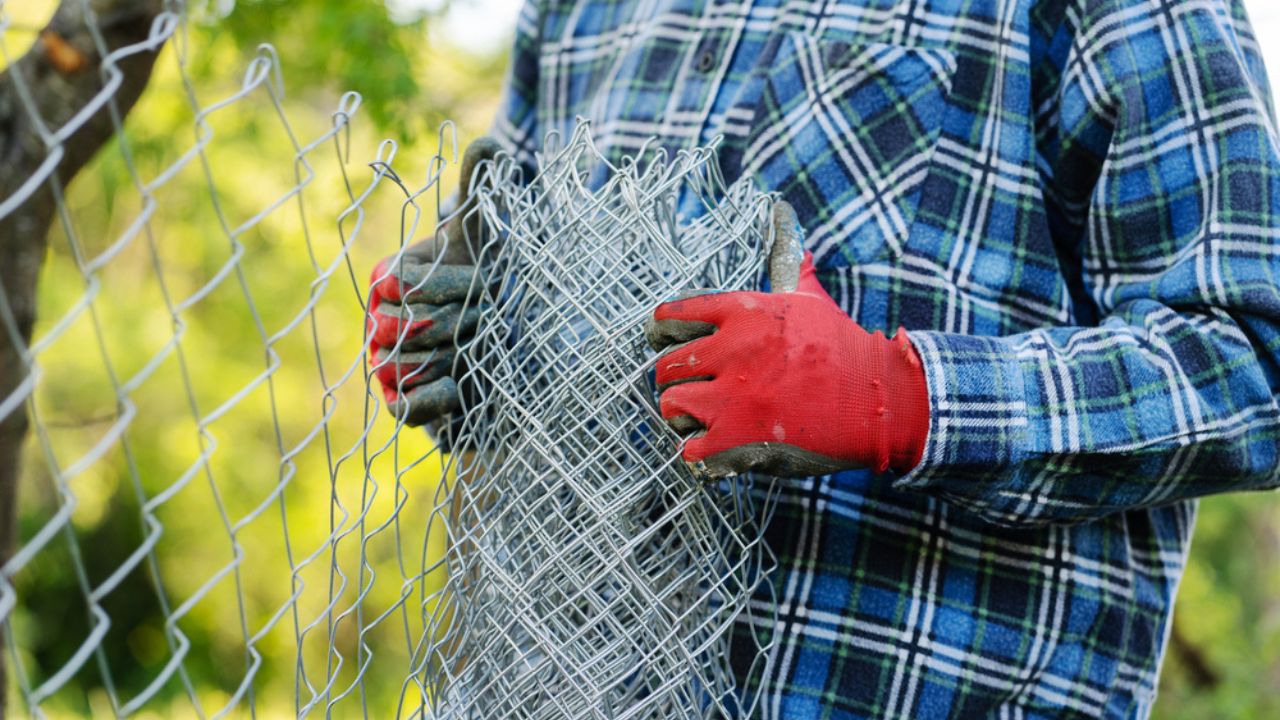
Image Credit: Shutterstock.
So, how do we prevent these cute critters from munching away in our gardens? Here are a few ideas compiled from Cooperative Extension websites. First, let’s look at fences.
Although any sturdy fence may deter groundhogs, as I’ve discovered the hard way, a determined groundhog can still dig under it. Our fence is about 6″ into the ground, and this path of entry is made through an unused corner of the garden, where the woodchucks feel safer.
Use wire fencing at least four feet high, and bury it 10 to 12 inches deep. Bending the bottom in an L shape, facing outward, will add further protection against burrowing, and bending the top outward at a 45-degree angle can prevent groundhogs and other critters from climbing over it. This method has the added benefit of excluding moles, voles, rabbits, and other burrowing animals as well.
Alternatively, or in conjunction with a wire fence, you can string up a single electric wire or a two-foot-tall electric fence. An electric wire should be placed four to five inches above the ground and the same distance from any wire fence. As always, when using electric fencing, make sure it doesn’t touch any vegetation and is clearly marked for safety.
2. Set a Trap
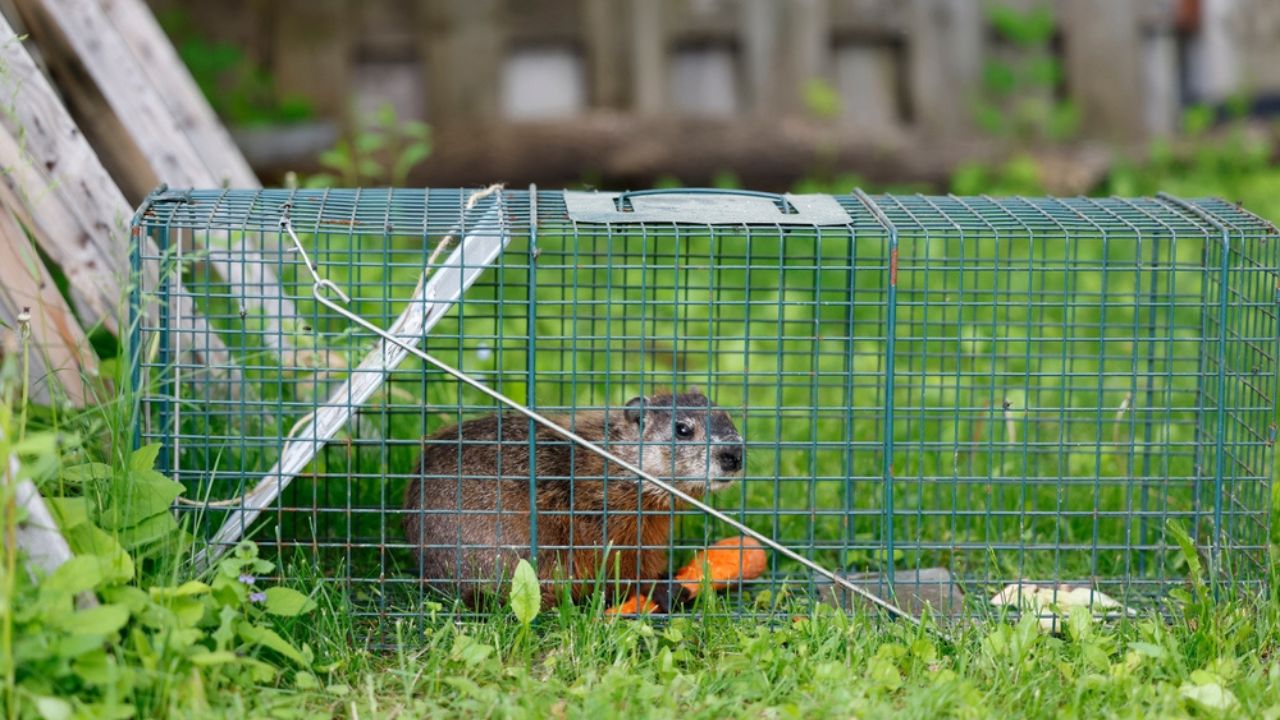
Image Credit: Shutterstock.
Live trapping is another effective method for ridding your garden of groundhogs. First, look up the laws in your region about trapping and relocating groundhogs, as many states prohibit releasing them across property boundaries. If you own several acres, simply release the animal(s) on the furthest side of your property from where they were trapped.
Purchase or rent a live trap at least 24 inches long with a minimum nine-inch opening. For best results and to reduce the likelihood of capturing non-target animals, set the trap near a burrow entrance. Bait it with fresh fruits or vegetables like apple slices, carrots, cantaloupe pieces, lettuce, or cabbage, and check the trap every morning and evening, replacing the bait if necessary.
3. Incorporate Resistant Plants

Image Credit: Shutterstock.
Groundhogs will eat just about anything, but there are a few plants that most will turn their noses up at. Try planting some of the following plants around the perimeter of your garden to discourage wandering groundhogs from entering, or check out the Cornell Cooperative Extension website for a more comprehensive list.
Vegetables:
- Beets
- Fennel
- Onions
- Potatoes
Annuals:
- Annual poppies
- Floss flowers
- Garden pinks
- Snapdragons
- Wax begonias
Perennials:
- Butterfly bush
- Coreopsis
- Foxglove
- Peony
4. Decorate a Scarecrow

Image Credit: Shutterstock.
Frightening tactics can be effective, especially when the objects are moved around or switched out periodically before the groundhogs become accustomed to them. Motion-activated lights, sprinklers, or noisemakers startle groundhogs that pass them, discouraging the animals from grazing in that area.
Try switching between different types of motion-activated devices, as the groundhogs might eventually decide they don’t mind getting wet or having some extra light while foraging if the same thing happens every time.
Of course, you can also opt for a good old-fashioned scarecrow, which can not only help with groundhogs (and possibly deer as well) but also add a touch of whimsy to the garden. Make sure to move it around frequently and spend plenty of time in the garden to establish a human presence there.
5. Call a Professional

Image Credit: Shutterstock.
If all this sounds like too much work, you can always call a local wildlife or nuisance animal control operator. These professionals will, for a fee, trap and relocate the groundhog(s) terrorizing your garden. Having someone else take care of the groundhogs frees up more time for you to spend pottering around the garden!
These furry little critters may be cute, but no one wants groundhogs munching away in their gardens. Thankfully, the control methods listed above offer several options for keeping groundhogs out of the garden, some of which also work for other pests. And unless you choose to relocate the groundhogs, you can still enjoy watching them trundle around the yard without worrying about them devouring the garden.

